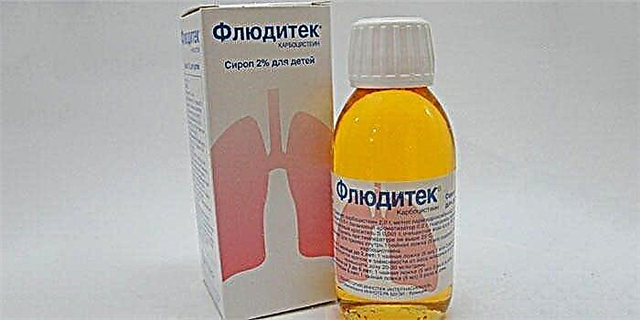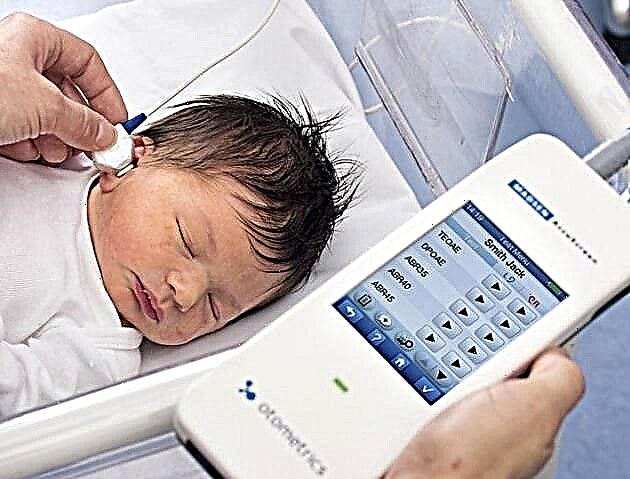Stool analysis is one of the most commonly prescribed laboratory tests in infants. It helps to diagnose gastrointestinal, infectious diseases, parasites, digestive and food absorption disorders. The analysis also determines the presence of fecal fat. What can an increased amount of fatty acids in feces in a baby indicate?

Potty kid
Types of fecal fats
Important! Determining the concentration of fat in feces is the most important method for detecting digestive disorders. Improper digestion of fat in most cases is the first signal of such disorders. Subsequently, the absorption of proteins and carbohydrates worsens.
The human digestive system is adapted to digest and assimilate nutrients. Proteins, carbohydrates and fats are digested using the appropriate enzymes in the pancreas. The breakdown of fat is also supported by the bile produced by the liver.
Pancreatic lipase is an enzyme responsible for breaking down fat. Lack of it and bile leads to the fact that fats do not break down into absorbable components, but are simply removed from the body. In this situation, fatty stools may appear in infants.
Another cause of fecal fats may be malabsorption of nutrients, including fats, in the small intestine. Unabsorbed fats are excreted in the feces.
There are several types of fecal fats:
- Fatty acids and soaps (insoluble compounds of fatty acids with calcium, magnesium) - indicate a lack of pancreatic lipase;
- Neutral fats are a sign of dysbiosis.
- The simultaneous presence of neutral fats, acids and soaps speaks of problems in the intestines, in which there is a malabsorption.

Types of fecal fats
Causes of neutral fat in the coprogram
When performing an analysis of feces for a coprogram, a quantitative and qualitative study of its parameters is performed.
In a qualitative analysis of fecal fat, the number of fat globules in the stool is counted using a microscope. Two types of these balls are measured: neutral fat and fatty acids.
Normal results:
- less than 60 balls of neutral fat;
- less than 100 - for fatty acids.
Quantitative analysis determines the fat number in grams in 24 hours. Norms for an infant are less than 1 year / 24 hours:
- in children who are on HB, fat should be from 30 to 50% of the sample;
- in infants under one year old with artificial feeding - from 10 to 40% of the sample (small volume of feces).
Important! The presence of neutral fat in the stool of a child can not only be seen under a microscope. In a child, fatty poop has definable external signs. They have a sticky clay-like structure and a sour-spicy smell.

Stool analysis for coprogram
There are various reasons why fatty acids are present in the stool of a child:
- Indigestion - no fat processing in the intestines. Occurs due to a lack of bile acids and pancreatic enzymes;
- Poor absorption of fats in the intestines;
- Excessive intake of fat. In a baby, this can be if the mother's milk is very fat.
Neutral fat in feces in infants can appear against the background of many pathologies:
- Diseases of the pancreas;
- Liver pathologies such as hepatitis, hemochromatosis (violation of metabolic processes associated with iron metabolism);
- Diseases of the gallbladder and ducts;
- Crohn's disease (chronic inflammation of the intestinal tract);
- Diverticulosis - a pathological process accompanied by the appearance of protrusions (diverticula) in the intestinal wall;
- Enteritis;
- Lactose intolerance;
- Celiac disease (an immune disease associated with a lack of enzymes that break down gluten);
- Dysbacteriosis, which can be caused by antibiotic treatment;
- The presence of parasites in the body.
Important! The baby may lack the enzymes necessary for the normal functioning of the digestive system due to its immaturity. Usually, problems disappear for most babies by the time they reach 4 months.
Symptoms of pathological processes
The first manifestation of pathology is more frequent defecation. An oily stool appears in a baby, it can have a pasty consistency, when the feces are flushed in the toilet, greasy stains remain. The stool may remain the normal color or become lighter in color with a gray tint.
Symptoms that may mean that pathological processes are developing:
- the child often coughs up without phlegm;
- bloating and intestinal colic;

Intestinal colic in a baby
- the baby stops gaining weight;
- mucous membranes become dry (the baby can cry without tears);
- the baby is lethargic and apathetic;
- nausea and vomiting may occur.
Types of steatorrhea and the danger of pathology
The pathological condition in which fatty feces are observed in a newborn is called steatorrhea. Depending on the reasons that cause it, the following types are distinguished:
- Intestinal. When lipids are not absorbed in the intestinal tract, but are excreted in the feces;
- Pancreatic. It occurs as a result of disorders in the pancreas. It is observed with a decrease in the synthesis of lipase - an enzyme responsible for the breakdown of fats;
- Alimentary. The basis of this type of pathology is malnutrition. Food contains a significant amount of fat that cannot be fully absorbed.
If there is no treatment for steatorrhea, or it stops too quickly, then the pathological condition can cause serious complications:
- Impaired absorption of nutrients contributes to the development of hypothyroidism (insufficient production of hormones by the thyroid gland), vitamin deficiency, protein and adipose tissue deficiency;
- Violation of the water-salt balance leads to a continuous feeling of thirst, edema, dehydration and seizures;
- With the development of steatorrhea, a significant amount of calcium is excreted from the body with feces, which leads to hypocalcemia;
- Against the background of dysfunction of the pancreas, the development of pancreatitis and diabetes mellitus is possible;
- The work of all internal organs and systems is disrupted. The baby not only stops gaining weight, but may even lose it. Due to improper functioning of organs, a state of fatigue, apathy, psycho-emotional discomfort may appear;

Lethargy and apathy in a child
- Potential loss of vision, deterioration of blood clotting.
Preventive measures
Dr. Komarovsky advises parents of babies not to panic when fatty acids or neutral fat are found in feces. If there are no other serious symptoms of the development of pathologies, such as a putrid odor of feces, frequent crying of the baby, skin rashes, etc., not caused by any visible reasons, and the baby feels good and gains weight, then most likely this is caused by enzyme deficiency , which is often the case in infants with a just forming digestive system.
In order to get the most reliable test results, it is necessary on the eve of their delivery in three days:
- do not use rectal suppositories;
- do not use laxatives;
- lactating mothers give up fatty foods, chocolate, nuts, citrus fruits.
Important! In infants, feces are not collected from the diaper due to its high absorbency. For this, a clean, moisture-proof surface is used, for example, oilcloth.
In case of breastfeeding, the mother must follow a diet. It is necessary that her milk does not contain an excess amount of fat, which her baby's body cannot absorb. Fatty, fried foods, smoked meats, sweets are excluded.
If a child over a year old has fat in the feces, it is necessary to revise his diet and diet:
- feed your baby more often and in small portions;
- to exclude a harmful effect on the pancreas, kidneys, liver, it is not recommended to excessively salt the dishes, give the baby products containing artificial additives;
- increase the amount of vegetables and fruits.

Child eating fruit
Most often, a simple restriction of fat intake by a nursing mother allows you to eliminate their excess in the baby's feces. However, when it is not possible to treat steatorrhea by dietary change alone, it is advisable to consult a specialist. The type of treatment will depend on the nature of the problem identified.



